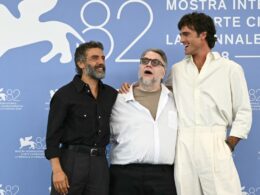Anyone Who Feeds on Majesty Becomes Eloquent is a thought-provoking exhibition commissioned by Spazju Kreattiv and featuring nine artists from across sub-Saharan Africa.
Running until November 9, the exhibition brings together artworks that explore our connections to land, water, time and memory in today’s changing world.
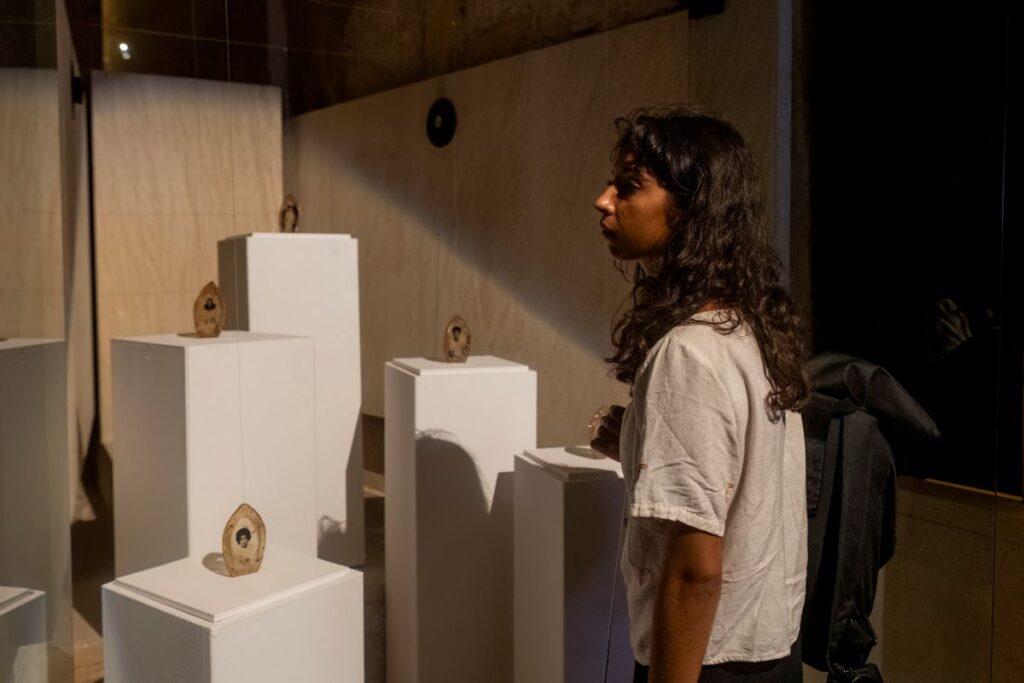
Curated by Ethiopian writer and curator Sarah Abdu Bushra, with Christine Xuereb Seidu as co-curator and project manager, the show invites visitors to experience the beauty and complexity of the natural world through contemporary African perspectives. The exhibition’s title comes from a poem that celebrates the power of friendship, and that spirit of connection runs through the entire project.
Bushra begins with a simple but profound question: Why is it important to talk about land and water, light and time? The show explores how artists use both their physical and emotional surroundings to understand themselves, their histories, and their communities. These artworks reveal how nature, memory and culture are intertwined, and how the environment can act as both teacher and mirror. Rather than providing answers, the exhibition opens conversations about where we come from, how we live together, and what kinds of futures we might imagine.
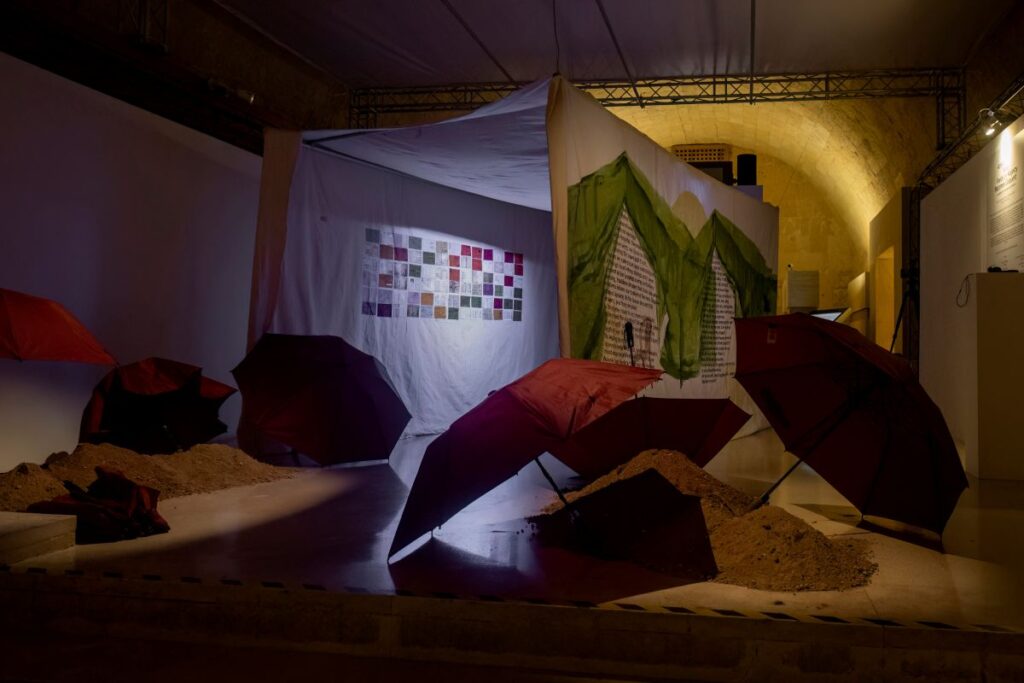
In The Rhythm of Dissipation (2024) and The Sound of Blue (2025), Fatima Tayob Moosa paints as if she is breathing emotion into colour. Each layer of paint becomes an act of meditation, soft yet powerful, transforming feeling into form. Her work is deeply spiritual, exploring change and inner balance through movement, light, and texture.
Tamrat Gezahegne also connects the spiritual with the material. In Self-Illumination (2025), he paints symbols from WEAGEF, a talismanic alphabet he created, onto worn denim trousers. The letters, inspired by Ethiopia’s diverse traditions, express unity, love, and creativity. His work reminds us that language, even when newly imagined, can bridge memory and the unknown.
Kirubel Melke’s textile pieces Circles, Mother and Child, Balls, and Circles in Strips speak through fabric, thread, and sewn clothing labels. His works move between memories of childhood, motherhood, and the global paths of textiles. Each “made in” tag carries hidden stories of labour and migration, turning ordinary materials into carriers of human history.
Miriam Hillawi Abraham brings us into a more sacred and intimate space with Adbar: Offerings to the Unseen World (2025). Her small, glowing sculptures made from gum Arabic and photographs honour Adbar, Ethiopia’s guardian spirits who protect trees and communities. Each delicate piece preserves traces of ancestors and the forests they watched over − a quiet reflection on kinship, care, and ecological loss.
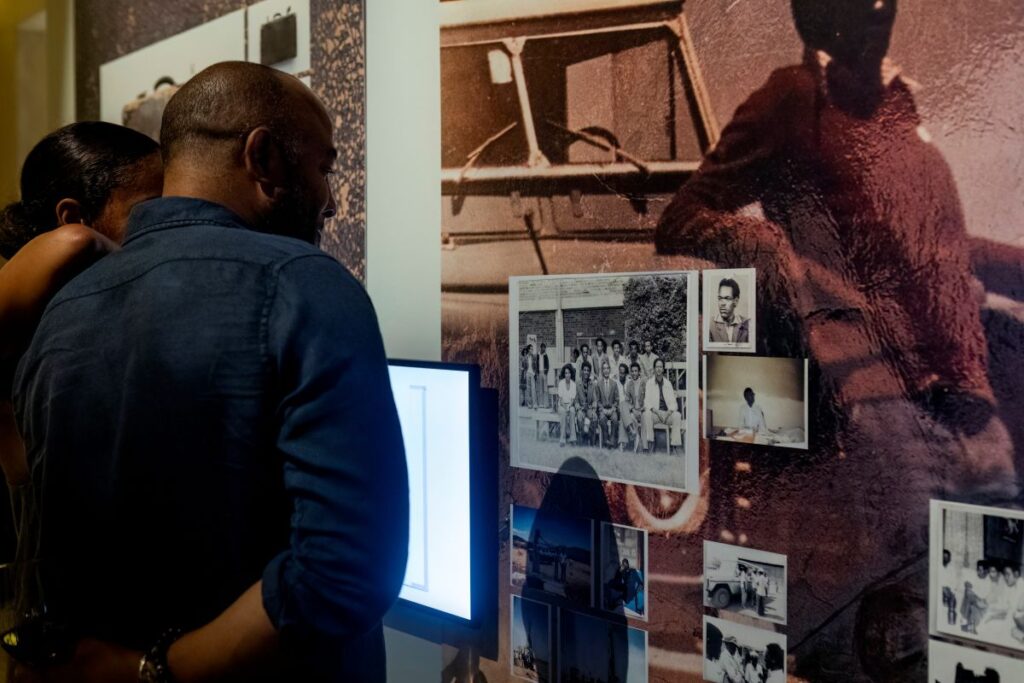
Personal memory takes centre stage in Eyoeal Kefyalew’s Water I Am (2024). Inspired by his late uncle’s briefcase filled with old files and cassettes, Kefyalew’s photographs and videos explore the impact of the Ethio-Eritrean war and its emotional echoes within families. His work transforms private grief into a shared meditation on displacement and belonging.
Berhanu Ashagrie’s Fluttering Emotions II (2023) turns the Netela, a traditional Ethiopian garment, into a large installation about mourning and hope. In some communities, wearing the Netela near the face signifies grief. Through folds of fabric and light, Ashagrie transforms this quiet act into a powerful reflection on collective healing.
Helen Zeru’s Institutionalization of the Informal (2025) focuses on Addis Ababa’s community-based networks such as Edir and Equb − systems of mutual aid and shared responsibility. Using fabric, soil, umbrellas, and sound, Zeru highlights how these traditional forms of support sustain artists and neighbourhoods despite rapid urban change. Her work honours the resilience and care that hold communities together.
From Ethiopia’s inner worlds, the exhibition expands outward to the landscapes of Kenya. In Untitled Installation (2023), James Muriuki uses photography and video to examine how cities are built from the earth’s materials stone, concrete, and glass and how, over time, they will return to the ground. His work captures the fragility of urban life and the cyclical nature of creation and decay.
Finally, the South African collective Rural Futurisms offers a forward-looking vision through their video installation Building the Hut-Lab in Makgobistad (2024). Documenting the construction of an experimental hut built by local women and craftspeople, their work celebrates collaboration, and the living knowledge found in traditional building methods. It is a hopeful reminder that the future can be built through cooperation, creativity, and respect for the land.
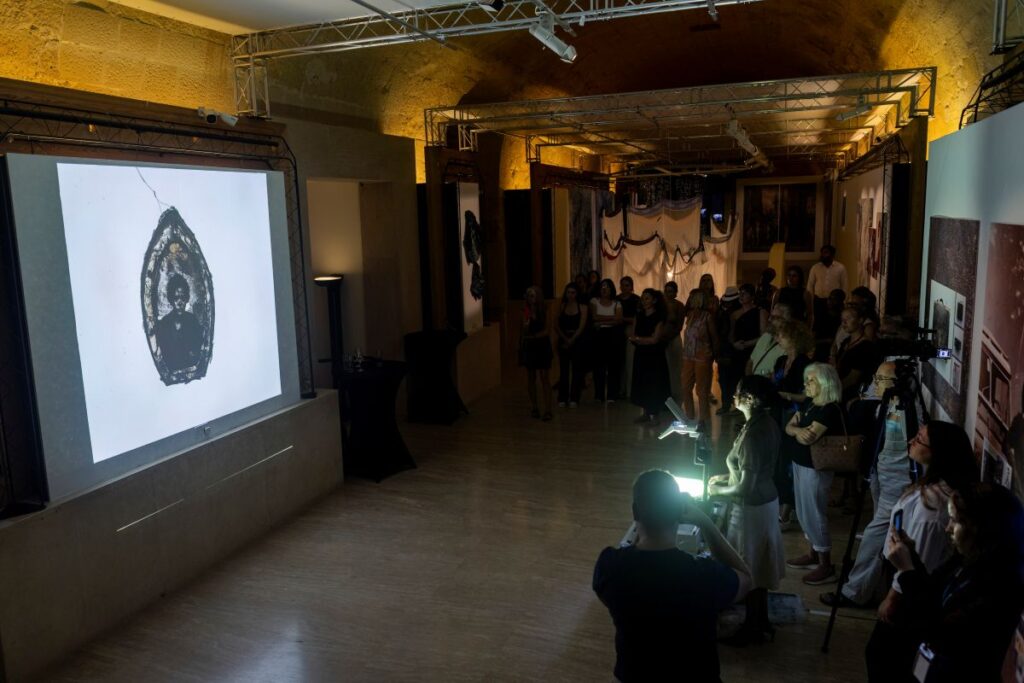
Together, these nine artists speak to resilience, imagination and connection, to the land, to one another, and to the past that shapes the present, and celebrates creativity as a living conversation between people and place, the seen and unseen, the remembered and the yet-to-come.
The exhibition continues Spazju Kreattiv’s mission to strengthen dialogue between African and Mediterranean cultures. It offers audiences in Malta a rare and inspiring encounter with contemporary African art − art that listens deeply, remembers tenderly, and dares to imagine new worlds.









